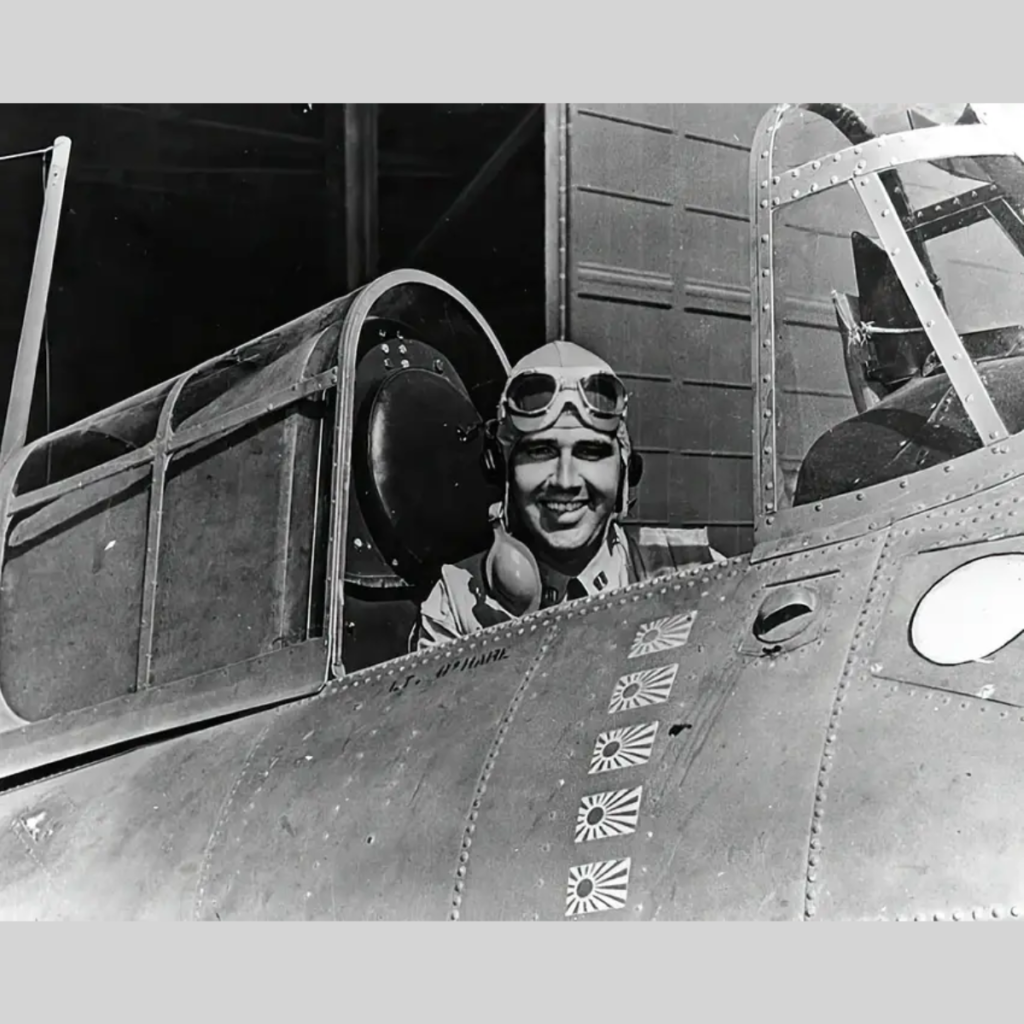
Unlikely Beginnings
Edward “Butch” O’Hare’s story begins far from the heroics of aerial combat. His father, Edward Joseph (EJ) O’Hare, known as “Easy Eddie,” was deeply entrenched in the underworld of Chicago’s mob scene. As a lawyer for the notorious Al Capone, EJ’s life was a far cry from virtue. Yet, amidst this murky backdrop, he harbored aspirations for his son to rise above. Living above a grocery store in St. Louis, EJ’s humble beginnings and eventual wealth through dubious means painted a complex picture of a father wanting more for his son.
EJ’s pivotal role in Capone’s empire, through legal maneuverings and business ventures, showcased his acumen but also his moral quandaries. It was this internal struggle that led him to send Butch to the Western Military Academy, planting the seed for Butch’s future in aviation. Despite EJ’s fraught path, his fascination with flying inspired Butch, setting him on a trajectory that would redefine the O’Hare legacy.

A Father’s Redemption
EJ O’Hare’s moral reckoning came on Valentine’s Day of 1929, following the gruesome massacre orchestrated by Capone. This event spurred EJ to take a stand, a decision that would drastically alter the course of his and Butch’s life. EJ’s choice to testify against Capone, aiding the infamous “Untouchables,” was his attempt at redemption. It was a brave move, aimed at rectifying his past and setting a righteous example for his son. His testimony was instrumental in Capone’s conviction for tax evasion, but it came at a high price. In 1939, the mob’s retribution caught up with Easy Eddie, ending his life and closing a chapter steeped in controversy.

Butch O’Hare
As EJ faced his fate, Butch O’Hare was carving his own path in the skies. As the Japanese bombers, known as “Betty Bombers,” approached the USS Lexington in a menacing formation, the stage was set for an epic confrontation. Butch O’Hare and his wingman, Marion “Duff” Dufilho, were poised to engage. However, the turn of events left Butch to face the formidable enemy alone. Dufilho’s guns had jammed, an unforeseen complication that thrust Butch into the spotlight of this aerial battle.
Butch, piloting his F4F-3 Grumman Wildcat, found himself outnumbered and outgunned. The enemy approached in two waves, with a total of 17 bombers intent on destroying the USS Lexington. Despite the overwhelming odds, Butch was undeterred. His exceptional skills as a marksman, a talent nurtured since childhood, were about to be put to the ultimate test.

Against the Swarm
The Japanese “Betty Bombers,” recognized for their performance but lack of protection for the crew, were flying in tight V formations. Butch, with only 34 seconds worth of ammunition, initiated his attack with precision and tactical acumen. He focused on taking accurate shots at the engines and fuel tanks, aiming to incapacitate the planes before they could unleash their deadly payload on the Lexington.
In a display of sheer bravery and skill, Butch managed to damage several bombers. His strategy of targeting critical components of the enemy aircraft proved effective. Among the pilots he faced was Lieutenant Commander Takuzo Ito, who came perilously close to bombing the carrier. Butch, relentless in his defense, concentrated his fire on Ito’s Betty, leading to a powerful explosion that sent the bomber crashing into the water.
Despite running out of ammunition, Butch’s efforts were not in vain. The Japanese bombers, rattled by his fierce resistance, failed to hit their target. Their bombs fell harmlessly into the ocean, and the USS Lexington was spared from destruction.
A Nation’s Hero
Butch O’Hare’s heroism on that fateful day resonated far beyond the confines of the Pacific Theater. In a time when morale was low, and the news from the front was often disheartening, Butch’s courage provided a much-needed boost to the American spirit. His recognition by President Roosevelt with the Medal of Honor was a testament to his valor. Tragically, Butch’s life was cut short in 1943 during another mission, but his legacy lived on.
Today, O’Hare International Airport stands as a tribute to this hero. The second-largest airport in the US, it serves as a reminder of a man who rose above his origins, shaped by a father’s complex legacy, to become a symbol of courage and sacrifice.
